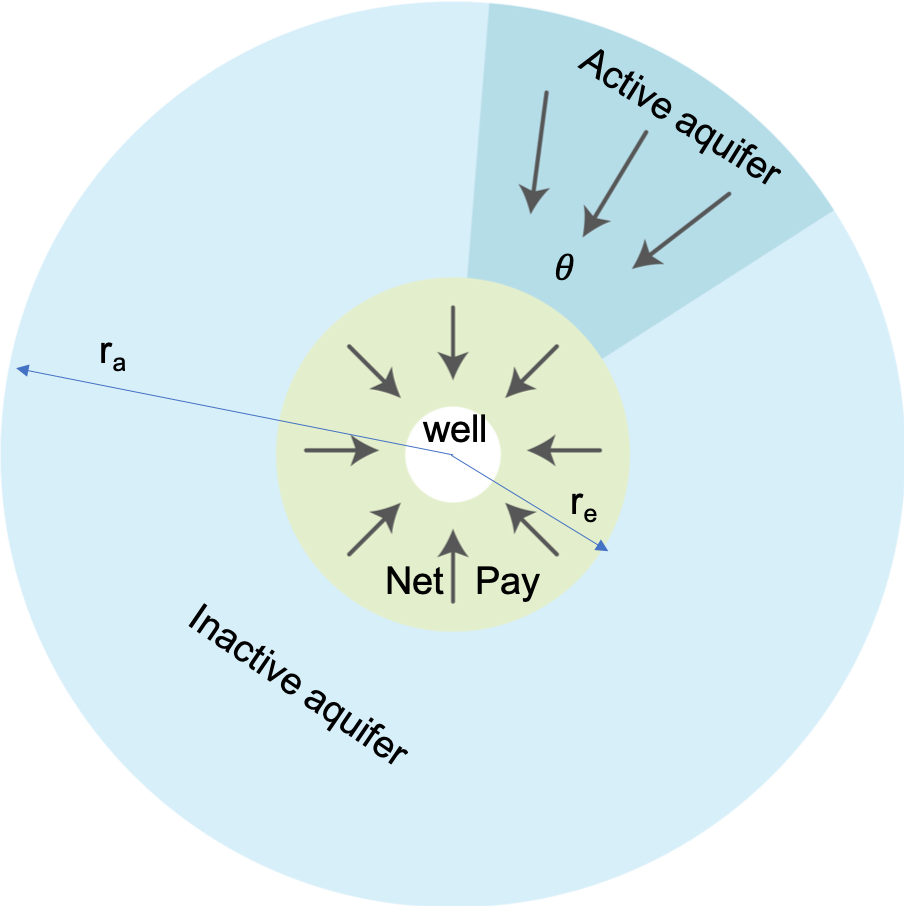Motivation
The most accurate way to simulate Aquifer Expansion (or shrinkage) is full-field 3D Dynamic Flow Model where Aquifer Expansion is treated as one of the fluid phases and accounts of geological heterogeneities, gas fluid properties, relperm properties and heat exchange with surrounding rocks. Unfortunately, in many practical cases the detailed information on the aquifer is not available which does not allow a proper modelling of aquifer expansion using a geological framework. Besides many practical applications require only knowledge of cumulative water influx from aquifer under pressure depletion. This allows building an Aquifer Drive Models using analytical methods.
Inputs & Outputs
| Inputs | Outputs | ||
|---|---|---|---|
p(t) | field-average formation pressure at time moment t | Q^{\downarrow}_{AQ}(t) | Cumulative subsurface water influx from aquifer |
p_i | initial formation pressure | q^{\downarrow}_{AQ}(t) = \frac{dQ^{\downarrow}_{AQ}}{dt} | Subsurface water flowrate from aquifer |
B | water influx constant | ||
\chi | aquifer diffusivity | ||
A_e = \pi \, r_e^2 | net pay area | ||
Physical Model
| Radial Composite Reservoir | |
| Transient flow | |
| Computational approximation to van Everdingen-Hurst (VEH) | |
| Fig. 1. Carter-Tracy aquifer drive schematic |
Mathematical Model
|
| ||||
|
| ||||
| |||||
Computational Model
|
See Also
Petroleum Industry / Upstream / Subsurface E&P Disciplines / Field Study & Modelling / Aquifer Drive / Aquifer Drive Models
Reference
2. Tarek Ahmed, Paul McKinney, Advanced Reservoir Engineering (eBook ISBN: 9780080498836)
